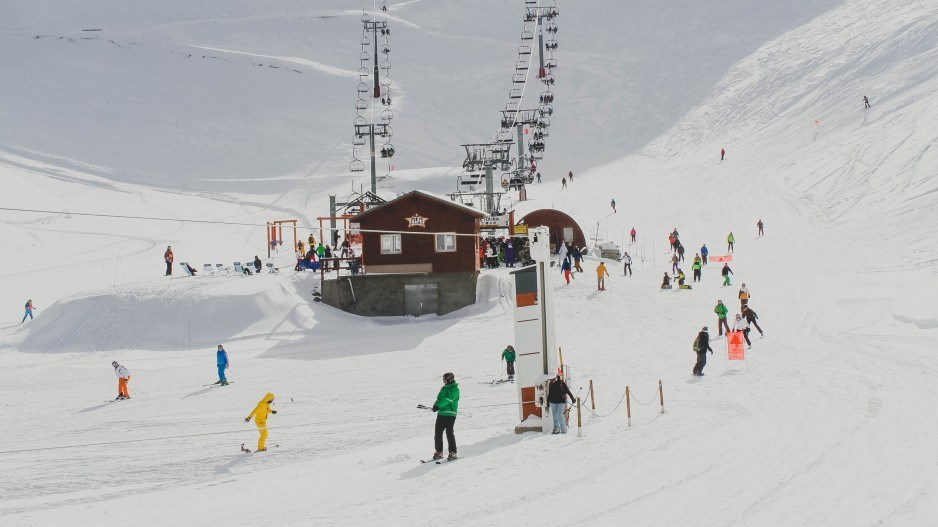It seems odd to be thinking about skiing in August, but here I am reading an article in SKI Magazine watching my hobby collide with my work.
The ski community in North America, a community I’ve been a part of for more decades than I care to admit, has been reckoning with allyship. It started with an instagram post linking to an article in SKI. The article explored how ski towns could be queer friendly year-round rather than just at annual events.
But “the overwhelming response to this post was a comment feed full of mean-spirited, hateful, and bigoted rhetoric,” according to a follow up article. I don’t have the time or energy to get into how awful human beings can be when they’re squirreled away banging out hate speech from underneath a rock.
I do, however, have the time to process my shock at how the ski and snowboard industry has missed an incredible opportunity to expand its market. As a lesbian in North Vancouver I have spent most of my life with the mountains as my backyard. I feel very comfortable at ski resorts and have had the privilege of skiing all over the country. But if I pause and look around, I don’t see a lot of diversity or other LGBTQ+ folks, at least not regularly.
Often ski towns host events to celebrate the queer community. One of the more popular events is Whistler’s Pride and Ski Festival, which will be celebrating 30 years in action in January 2024. It is definitely one of the world’s largest queer-focused ski weekends. But it’s not happening across the entire snow season and certainly isn’t happening at all resorts.
In my experience, companies want to develop diversity, equity, and inclusion for three reasons:
- A moral obligation
- Legal obligations (Human Rights, Employment law)
- The business case for DEI
The business case for DEI is strong and has been researched for over 20 years. Research shows that companies with high diversity and inclusion have:
- Higher attraction and retention rates
- 8x better business results than companies with low diversity
- 2x more likely to achieve financial performance
- 6x more likely to be innovative and agile
Most companies are working to strengthen their workforce and to achieve the benefits listed above. But for the ski industry it seems there is an added economic value for embracing DEI - they have an untapped market worth about $40M-$80M a year in Canada alone.
According to the Canadian Ski Council, there are 3.15 million active skiers and riders in Canada. The annual economic impact for Canada’s ski industry is over four billion dollars.
Generally research shows us that about 10% of the population identifies as a member of the LBGTQ+ community. That could mean within the 3.15M active skiers there are 315,000 LGBTQ+ folks in Canada. Or there is the potential to expand the number of current active riders in Canada. Even if the LGBTQ+ community is underrepresented on the mountain, 315,000 is a reasonable estimate of what it could be if the LGBTQ+ market was represented.
Interestingly, GenZ (young adults turning 25 years old) report a twofold increase in identifying as a member of the LGBTQ+ community over previous generations. This younger section of the population is an essential market grab. The potential economic impact could be as high as $80M+ a year for the ski industry.
There is certainly apprehension from minority groups other than the LGBTQ+ community towards engaging in outdoor recreational activities. James Mills, an American author and journalist has been researching this issue, detailing his findings in his book, The Adventure Gap. Generally, it comes down to a lack of belonging. Discrimination and harassment, lack of visibility, and a lack of exposure from a young age all play a role in the dramatically decreased representation of minority groups in outdoor activities.
Unfortunately Canada doesn’t track demographic data for skiers and riders. But in the United States,The National Ski Areas Association (NSAA) reported on the U.S. Downhill Snowsports Demographics for 2021/22. They show that nearly 90% of skiers in the US are white. It’s likely the data is similar in Canada.
Leaves me with the questions: What is holding back the Canadian ski industry from growing the market to its full potential? The projected growth of the market could be 40-80 million dollars and is just for the inclusion of the LBGTQ+ community. The market for ski equipment and ski resorts is in the billions of dollars and is on a steady path for growth. Surely the opportunity to expand that market is worth considering for all key players. It becomes a matter of how to grow that market quickly and successfully. When the first snow starts to fall, we all stand to win.
Elisabeth Cooke is the CEO of Dignii Technologies. She’s also an adjunct professor at the UBC Sauder School of Business. Dignii can be found at www.dignii.com and Elisabeth can be reached at [email protected].




